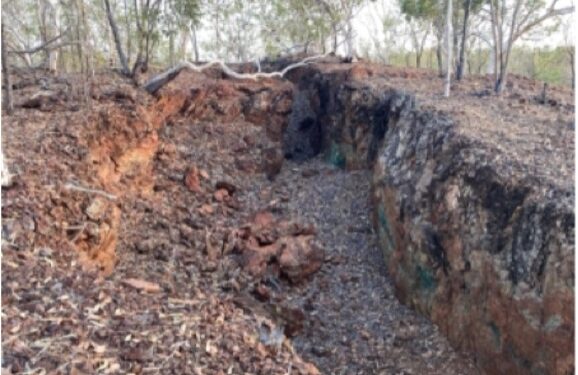DeSoto Resources Limited (ASX:DES) has confirmed the copper-gold-potential with new assay results from the company’s wholly-owned Fenix Copper-Gold-Lithium Project, located in Australia’s Northern Territory.
Initial gold reconnaissance sampling comprising 81 samples was completed across the Fenix Project licences EL31356, EL31899 and EL32148 in 2022.
The sampling and mapping programme was designed to field validate existing datasets, confirm historical targets and conduct a regolith assessment to determine the amenability of the new project area for soil sampling.
“We are very pleased with these initial copper-gold assays from the Fenix Project that confirm the potential of the Project to return high-grade results and deliver new targets for drill testing,” Managing Director, Chris Swallow, said.
“The results from Copperfield and Emerald Springs also demonstrate the prospective nature of the Pine Creek Oregon, host to multiple world-class deposits.
“These results, as well as the pending assays, demonstrate the company’s ability to generate exploration targets from largely greenfield areas of interest with most of the Project untested by modern exploration techniques.
“The company is well funded to complete major drilling programs, with further plans for exploration programs post the wet season to be announced in the coming weeks.”
A total of 35 reconnaissance rock samples were collected over an 8km² area collectively known as Copperfield where numerous small historical copper-gold workings occur, particularly in the east of the area where up to 2.0g/t Au (CR1984-0255) and 0.32% Cu (CR1997-0022) have been reported in separate rock chips.
In the west of the area numerous anomalous gold and copper results have been historically reported including a best gold rock chip of 3.54g/t Au (Copperfield 4; CR1997-0022) and a 15.2% Cu rock chip in the central area (CR1997-0022)
Desoto collected a total of 13 rock samples (DSRK0040-52) from the eastern Copperfields area. These samples were taken along a 1m – 5m wide SW dipping shear with laminated and weakly brecciated ferruginous quartz veining that was mapped coincident with the historical workings. A total of three samples reported greater than 1% Cu with a best result of 6.5% Cu (DSRK0044) returned from a 10cm quartz-malachite-goethite vein adjacent to historical workings.
Reconnaissance mapping has extended the structure over a strike of 620m, to the tenement boundary in the north, and to the SE where it is concealed under thin (<20cm), unconsolidated pisolitic soils.
In the western Copperfields area (Copperfield 4), a total of 8 rock samples (DSRK0059-66) were collected with best results including 4.11g/t Au (DSRK0066) and 1.68g/t Au (DSRK0064).
Reconnaissance mapping of the area identified SW dipping veining throughout with individual veins mapped over strikes up to 300m. Veins vary in size from centimetre scale up to 2.0m width with multiple styles observed including bucky opaque, gossanous breccia veins and extension veins. The new rock chips have extended the area of known mineralisation 860m NNW of historical gold rock chips. The aerial extent of parallel veining, coupled with grades of up to 3.45g/t Au observed in previous work is considered encouraging for the area, pointing to a mineralised fluid corridor of significant scale.
For further information please visit: https://desotoresources.com/












